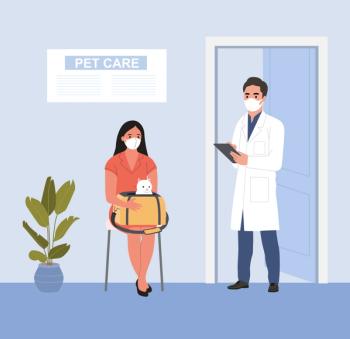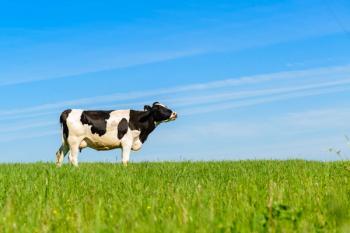
OTC and illegal drugs in companion animals (Proceedings)
This discussion will be divided into OTC products and Illegal drugs for ease of discussion.
This discussion will be divided into OTC products and Illegal drugs for ease of discussion. One just has to peruse the shelves in the mega pharmacies or super markets to see the number of OTC preparations available from NSAIDs to cough preparations to antihistamines, just to name a few. It would take pages just to list the various pharmaceuticals and the many formulations of each. Therefore this presentation will be limited to NSAIDS, antihistaminics, pseudoephedrine, and several illicit drugs.
OTC NSAIDs
There are many OTC NSAIDs with just a few active ingredients. These ingredients are: ketoprofen, ibuprofen, naproxen sodium, and aspirin. Aspirin is sometimes combined with acetaminophen and caffeine. While not considered a NSAID, acetaminophen produces it's own set of systemic disease, especially in cats. There are more prescription NSAIDs labeled for both animals and humans. All NSAIDs have the common mechanism of action for their anti-inflammatory properties and this is their ability to inhibit cyclooxygenase, an enzyme required for prostaglandin synthesis, both COX1 and COX2. In dogs, the most common side effect associated with NSAIDs is gastrointestinal toxicity characterized by gastric ulcers.
Additionally, acute renal dysfunction have been associated with the use of NSAIDs, the most common being: acute renal failure, hyperkalemia, and acute interstitial nephritis with or without proteinuria. The most commonly encountered adverse renal effect related to the use of NSAIDs is prostaglandin- dependent renal insufficiency. NSAIDs may clotting problems by inhibiting COX activity in platelets and some may induce hepatic injury. The clinical signs associated with NSAID induced toxicity include: vomiting, depression, diarrhea, ataxia and incoordination, bloody stool and melena, polyuria, and polydipsia.
Treatment of NSAID induced toxicoses may include: stoppage of NSAIDs, emetics, activated charcoal followed by a saline cathartic to minimize absorption, unless diarrhea has begun. Fluid therapy is a must to restore blood volume and a normal state of hydration. Medical therapy in dogs and cats is directed towards restoring a normal gastric mucosa. Drugs recommended include H2 receptor antagonists (cimetidine, ranitidine, or famotidine), a proton pump inhibitor (such as omeprazole), sucralfate and misoprostol (a PGE1 analogue). The prognosis in these cases depends upon the duration of exposure before treatment was instituted.
Acetaminophen is often given to dogs and cats by their owners when the pets appear not be feeling well and even if they dose them as they would a child, the animals become overdosed. In fact acetaminophen should never be administered to a cat, but dogs are more tolerant. In cats, acetaminophen will cause: cyanosis, methemoglobinemia, dyspnea, severe depression/weakness, anorexia, vomiting, and facial and/or paw edema. The mechanism if this is not understood.
Normally, hepatic necrosis is all that occurs in dogs. Treatment should consist of GI decontamination and supportive care. N-acetylcysteine should be given orally with a loading dose of 140 mg/kg followed by 70 mg/kg every 6 hours for seven (7) additional treatments. Cimetidine can be used to block biotransformation of the acetaminophen. The recommended treatment of the methemoglobinemia is the administration of ascorbic acid, but some studies have shown that methylene blue is more effective and not the “bad actor” as once reported. The prognosis is guarded to poor in these cases.
Antihistamines
Antihistaminics (H1) blockers are available OTC, either individually or in combination with other drugs for use in humans. The clinical signs produced in animals appear to be dose dependent with lower doses causing sedation and higher doses inducing hyperactivity and seizures. Cardiac arrhythmias sometimes develop in these patients. Combination products contain other ingredients such as acetaminophen, aspirin, caffeine, codeine, dextromethorphan, phenylpropanolamine, and psuedoephedrine to name a few. Prescription antihistamine preparations may contain codeine or hydrocodone.
Treatment of antihistamine overdosage should include the induction of emesis, if induced early or before the antiemetic effects appear. Following this normal GI decontamination should take place and treated according to the clinical signs being exhibited. The CNS depression following a low dose exposure usually resolves, but if the animal is exhibiting CNS stimulation or seizures, the administration of a CNS depressant is necessary. Diazepam often controls the seizure activity, but other medications such as pentobarbital, methocarbamol or guaiafenesin may be indicated. The animals should be monitored and if cardiac arrhythmias develop, control measures must be initiated. If combination products have been ingested then the clinician will have to treat the animal according to the signs being exhibited.
Pseudoephedrine
Pseudoephedrine-containing medications can cause dose dependent stimulation of the heart and the CNS. The most common clinical signs seen include: hyperactivity, panting, hyperthermia, hypertension, tachycardia and mydriasis. Intoxicated animals should receive GI decontamination. Agitated and hyperactive patients should receive acepromazine, as diazepam may exacerbate the agitation. Animals exhibiting seizures should receive pentobarbital. Because muscle damage can occur due to the excessive shaking, fluid therapy should be instituted to prevent a myoglobin nephropathy. The affected animals should be monitored for up to 3 days following a severe intoxication.
Illicit drugs
Illicit drugs could also be described as recreational drugs. They may be either illegal drugs or illegally possessed prescription drugs. The ilicit drugs which animals may ingest include: marijuana and hashish, cocaine, hallucinogens, inhalants and heroin. Inhalants which are used by people are not likely to cause a problem in animals except in cases of animal mis-treatment.
Marijuana
Marijuana (Cannabis sativa) contains the hallucinogen, tetrahydrocannabinol, also known as THC. Ingestion of marijuana by companion animals can result in depression, ataxia or incoordination, as well as vomiting, diarrhea, drooling, increased heart rate, and even seizures and coma. Treatment is primarily symptomatic and supportive. The induced seizures may be controlled by diazepam. Depending upon the amount ingested, treatment may be required for up to 5 days before the animal returns to normalcy.
Amphetamines
Amphetamines are used in humans as appetite depressants, attention deficit disorders and narcolepsy. Illegal amphetamines include methamphetamine and many “designer drugs” such as MDMA or Ecstasy. Ritalin (methylphenidate) is also in this group. These drugs are CNS stimulants because they increase catecholamine release, prevent its re-uptake and increase the release of serotonin. Clinical signs in exposed animals would include hyperactivity, restlessness, mydriasis, vocalization, hypersalivation, tachypnea, tremors, seizures and tachycardia. Some animals may exhibit bradycardia and depression.
Treatment is directed towards GI decontamination and controlling the CNS stimulation. Acepromazine may be used for the hyperactivity and restlessness, but seizures must be controlled by pentobarbital. Acepromazine may lower the seizure threshold. Cardiac arrhythmias must be treated accordingly. Unless the affected animal has been in prolonged, uncontrolled seizures, the prognosis may be good.
Cocaine
Cocaine is a schedule II drug and has been used as a local anesthetic. Street cocaine is often mixed with other legal or illegal drugs. Animals exposed only to cocaine exhibit hyperactivity, ataxia, dilated pupils, an vomiting along with hypersalivation. Cocaine induces profound cardiac effects along with muscle tremors and seizures. Tachypnea is often observed. Treatment is directed towards decontamination of the GI system and stabilizing the heart and CNS. Because cocaine is so rapidly absorbed, GI decontamination must be undertaken following control of CNS hyperactivity. In most instances, routine IV administration of diazepam may be effective in seizure control, but pentobarbital may be required. Tachycardia may be controlled by beta blockers, but ventricular arrhythmias must be treated with lidocaine.
LSD
LSD or lysergic acid diethylamide intoxication is not commonly seen in pets. The mechanism of action is not clear as several neurotransmitters may be involved. While human symptoms have been described as alterations of visual and sensory perception along with euphoria, psychotic attacks and panic reaction can occur. The clinical signs in animals include disorientation, excitement, depression and mydriasis. Vocalization may be prominent. Treatment is symptomatic and the animal should be kept in quiet surroundings. Diazepam may be used to control the excitement. Supportive treatment may be necessary as indicated.
Phencyclidine (PCP)
Phencyclidine (PCP)(Not to be confused with the herbicide pentachlorophenol also known as PCP) and its weaker analogue ketamine are dissociative “anesthetics whose mechanism(s) of action is not understood. Animals with ketamine generally have normal or increased muscle tone. It does not abolish many reflexes. Ketamine causes increased intraocular pressure, cardiac output, heart rate and increased blood pressure. Dogs with PCP exhibit jaw snapping, grimacing, muscular rigidity, salivation, seizures and blank staring. Diazepam may be administered in most cases to control hyperactivity and most seizures, if any occur. In some animals general anesthesia may be required. Normal supportive care and appropriate fluid therapy as necessary.
Heroin and Other Opiates
Heroin and other opiates induce vomiting, defecation salivation, CNS depression and ataxia in dogs. Dose depending, cats often exhibit excitement. In severe case clinical signs from respiratory depression to seizures, coma and death can occur. In cases of recent ingestion, GI decontamination should be instituted. As respiratory depression is a common sequella, leading to hypoxia and death, respiratory support is mandatory. Naloxone at a dose of 0.1-0.02 mg/kg is indicated and may be repeated. Naloxone may not restore the animal to full consciousness. If GI decontamination was not instituted before, it should be completed at this time because the offending opiate will continue to be absorbed.
Newsletter
From exam room tips to practice management insights, get trusted veterinary news delivered straight to your inbox—subscribe to dvm360.




